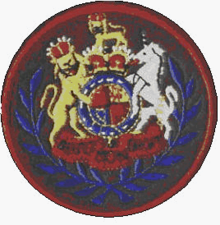- Conductor (Army)
-
Conductor (Cdr) is an appointment held by a few selected Warrant Officers Class 1 in the Royal Logistic Corps and is the most senior appointment that can be held by a warrant officer in the British Army. The appointment was also reintroduced into the Royal Australian Army Ordnance Corps for selected Warrant Officers Class 1 in 2005.
Contents
History
The first known mention of Conductors is in the 1327 Statute of Westminster, when they are mentioned as the men whose job it was to conduct soldiers to places of assembly. The Conductor of Ordnance is mentioned in the records of the siege of Boulogne in 1544 and Conductors are mentioned several times in surviving records from the 17th century. In 1776 they are described in Thomas Simes's book The Military Guide for Young Officers as assistants to the Commissary of Stores. The Land Transport Corps and the Military Stores Department of the 19th century both included Conductors in their strength.
On 11 January 1879, a Royal Warrant established Conductors of Supplies (in the Army Service Corps) and Conductors of Stores (in the Ordnance Store Branch) as Warrant Officers, ranking above all non-commissioned officers. In 1892, Conductors of Supplies were renamed Staff Sergeant Majors 1st Class, but Conductors of Stores remained in what in 1896 became the Army Ordnance Corps. Staff Sergeant Majors in the new corps were renamed Sub-Conductors. In February 1915, with the general introduction of warrant officers throughout the army, Conductors and Sub Conductors became Warrant Officers Class I. Sub-Conductors reverted to the appointment of Staff Sergeant Major in 1967, but the appointment of Conductor passed to the new Royal Logistic Corps in 1993.
The appointment lapsed in the Australian Army in the late 1940s, but was reintroduced in July 2005. The first six Conductors were appointed in April 2006.
Modern day
The appointment may now be held by WO1s in any RLC trade, including transport, catering, pioneer, ammunition technician and postal warrant officers, as well as the original suppliers.
It is a great honour to be appointed and prospective Conductors must have held the rank of WO1 for at least one year (reduced from three years in 2006). They may not be currently serving as Regimental Sergeant Majors (i.e. they must be Staff Sergeant Majors). Since 2009, no more than 8 serving WO1s of the RLC at any one time (excluding RSMs) may hold the appointment of Conductor. Since 2001, Conductors have received their Warrant of appointment on a parchment scroll, reviving an ancient tradition.
Insignia
From 11 July 1900, Conductors were authorised to wear a crown within a laurel wreath on their lower sleeve and Sub-Conductors a crown, although they did not start actually wearing these until 1901 and 1904 respectively. In 1915, Conductors were authorised a crown in a laurel wreath and Sub-Conductors the royal coat of arms. In 1918, Conductors began wearing the royal arms in a laurel wreath, still their badge of rank, and Sub-Conductors (re-named 'Staff Sargeant Major' in 1968) the royal arms alone. Like RSM's and all other WO1's, Modern Conductors wear Sam Brownes.
Victoria Crosses and George Cross
Two Conductors of the Bengal Ordnance Department won the Victoria Cross during the Indian Mutiny. John Buckley won it at Delhi on 11 May 1857 and James Miller at Futtepore on 28 October 1857.
A former Conductor of the Royal Logistic Corps, Captain Peter Norton, won the George Cross near Baghdad on 24 July 2005.
External links
Categories:- British Army specialisms
- Australian Army
- Military ranks of the United Kingdom
- Military ranks of Australia
Wikimedia Foundation. 2010.

